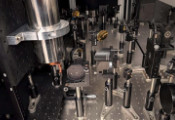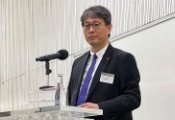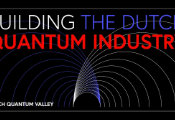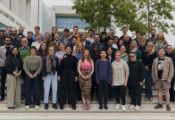Giant Stretch in Quantum Materials Confirms 100-Year-Old Prediction
June 17 2025 -- Research from the University of St Andrews has set a new benchmark for the precision with which researchers can explore fundamental physics in quantum materials. The work has implications extending from materials science to advanced computing, as well as confirming a nearly 100-year-old prediction.
The researchers explored magnetoelastic coupling, which is the change in the size or shape of a material when exposed to a magnetic field. It is usually a small effect, but one which has technological consequences.
A team from the School of Physics and Astronomy at the University of St Andrews has now discovered that this effect is remarkably large in a case where one wouldn’t have expected it – in a transition metal oxide. Oxides are a chemical compound containing at least one oxygen atom and one other element in its chemical formula. High-temperature superconductors are one of the most prominent examples of a transition metal oxide.
In their groundbreaking study, published today in Nature Physics, the team – in collaboration with CNR-SPIN, Italy, and the University of Bonn – demonstrates how subtle changes in magnetic alignment of the atoms has only a subtle influence on the electronic states, but dramatic impact on structural properties, making the material stretch or contract. Researchers used ultra-low temperature scanning tunnelling microscopy (STM) to detect these changes.
This work required a super quiet environment as sound waves can already cause the instrument to move and disturb the measurements. The study was performed using bespoke microscopes in ultra-low vibration laboratories at the University of St Andrews. The instruments enable detection of changes as small as a few hundred femtometers – a unit of length corresponding to about one quadrillionth of a meter.
The team found that the changes directly confirmed predictions from the Bethe-Slater curve, a fundamental concept first proposed in the 1930s to describe the interplay between magnetic order and atomic distances. While originally devised to describe the magnetism in elemental metals, the authors demonstrated that here it remains valid in a complex oxide material.
Researchers explored magnetoelastic coupling
Remarkably, the changes they were able to measure were much larger than predicted by current theoretical models. The interplay of magnetism and the crystal structure may be important also in other transition metal oxides.
Lead author Dr Carolina Marques of the University of St Andrews said: “We discovered that we could control the magnetization of the surface separate from that of the material itself, enabling us to directly measure subtle shifts in the electronic states. These changes are linked to whether the magnetic moments of the surface and subsurface layers align parallel or antiparallel, enabling us to detect tiny structural changes with sub-picometer resolution. One picometer is about one hundred times less than the radius of an atom. Our findings could also lead to innovative methods for reading magnetic states purely electronically or structurally, potentially revolutionizing data storage technologies.”
Professor Peter Wahl highlighted the significance: “Our study not only confirms theoretical predictions of the qualitative behaviour from nearly a century ago but also opens new pathways to understanding the complex interplay between structural, electronic, and magnetic properties in quantum materials. It highlights the importance of correlations between electrons in this interplay. Correlations and their impact on the way the atoms arrange in a material lie at the heart of phenomena like high-temperature superconductivity, and better understanding them could pave the way for increasing the stability of the superconductivity and making the materials more useful for new and greener technologies.”




































